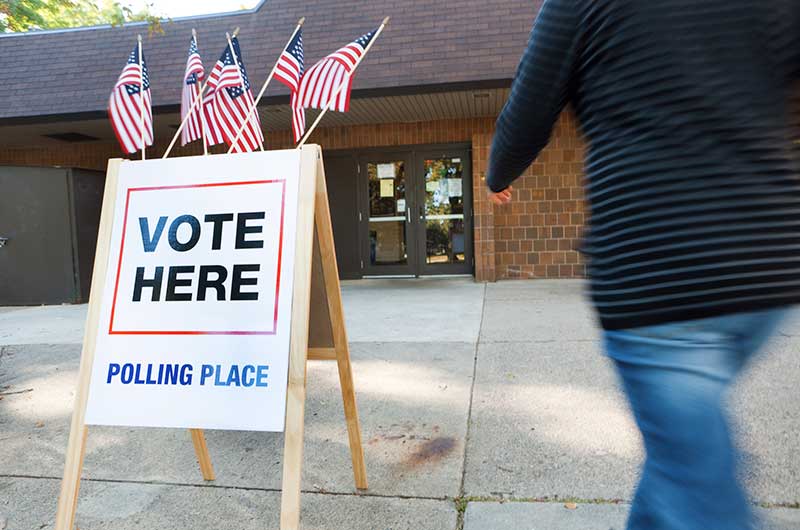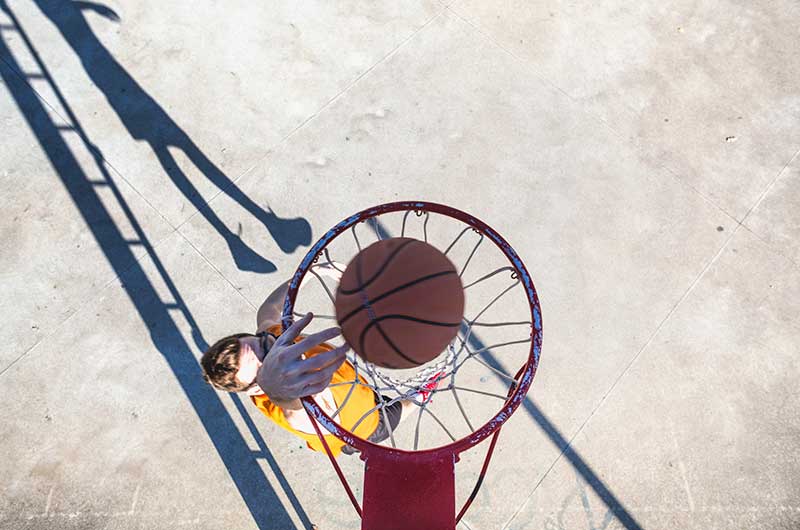
In his Gettysburg Address, President Abraham Lincoln identified our unique structure of representative democracy as a system that is truly, “Government of the people, by the people, for the people.” One of the privileges of living in a democratic republic like the United States is that we have the opportunity to select the officials who run our government by voting in elections. The purpose of this blog is not to advocate for any particular political party or candidate, but to encourage you to exercise your right to vote and simply make sure that you get to the polls this year. Going to the polls can take time away from other activities such as going to the gym for your favorite fitness class, but that is not a valid reason to shirk your responsibility as a citizen.
Make going to the polls part of your workout program this election day. Here are six ideas for turning your trip to the polling booth into an opportunity to exercise and burn a few calories while you participate in the democratic process of selecting new officials.

1. Most polling stations are located in central areas of a specific neighborhood. If that’s the case for you, leave your car at home and walk. Not only will you get some exercise, this is also a good opportunity to see and interact with some of your neighbors who will most likely being doing the same thing. If you must drive to your polling station, park as far away as possible and enjoy the opportunity to get some fresh air.
2. Many polling stations are located at schools that have playground equipment. If this is the case, take the opportunity to knock out a quick workout on the playground. Change into your workout clothes, walk to your polling location (that’s your warm-up) and then hit the playground equipment for a little body-weight circuit of pull-ups on the monkey bars, step-ups on a level piece of climbing equipment or bench, push-ups on the ground and jogging between the goal posts on the playing field or baskets on the basketball court. Set a timer for 45 seconds for each exercise and see how many rounds you can complete in 12 to 15 minutes.

3. Turn the wait into an opportunity to work on your balance. If you have to wait in line, practice balancing on one leg at a time. To enhance stability, press the foot of the standing leg into the ground while squeezing your glute muscles on that hip; hold for 20 to 30 seconds and alternate legs. To increase intensity, don’t take a rest interval and simply alternate from one leg to the other while you’re waiting. Another option for increasing intensity is to look up and down or side-to-side while you’re balancing on one leg. Other people might look at you a little funny, but you get the last laugh because you’re turning your waiting time into workout time.
4. Isometric contractions are often overlooked in many exercise programs. During an isometric contraction, the involved muscles are shortening, but no joint motion is taking place. Contract and hold the muscles of your abdominals, chest, biceps, triceps, thighs and glutes for 30 seconds at a time. Alternate from one muscle group to the next; for example, squeeze your thighs for 30 seconds, then your glutes, your abs and your arms. Repeat as many times as you can while you’re waiting. Even though you aren’t moving through a range of motion or moving an external resistance, you will still be doing activity. In fact, you might be surprised by how much you start sweating.
5. Toe raises can strengthen your calf and foot muscles while you wait for your turn to cast your ballot. Simply roll up on your toes, hold for three to five seconds and slowly allow your heels to return to the ground. Alternate between slow and fast movements to make sure you fatigue all of the muscle fibers. It’s best if you are wearing flat shoes or exercise shoes; if you’re wearing dress shoes, remove your shoes and do the toes raises on your feet (if possible and appropriate).
6. As you’re waiting in line to vote use your phone to plan your workout for later in the day. Use an app to sign up for a class, text a friend and arrange to meet for a walk or run, or use the browser on your phone to look up some new exercise ideas for your next workout. (Here is a link to the ACE exercise library to help get your creative juices flowing.)
We may not always agree with one another about the policies of our elected officials or whether a particular candidate should be elected in the first place, but we can all agree that our right to vote is the foundation of our system of government. And for that reason, we should look forward to participating in the democratic process at every opportunity. This election day, don’t let your exercise program get in the way of exercising your right to vote; use these ideas to help you maintain your fitness while you exercise your right to vote.




 by
by 






 by
by